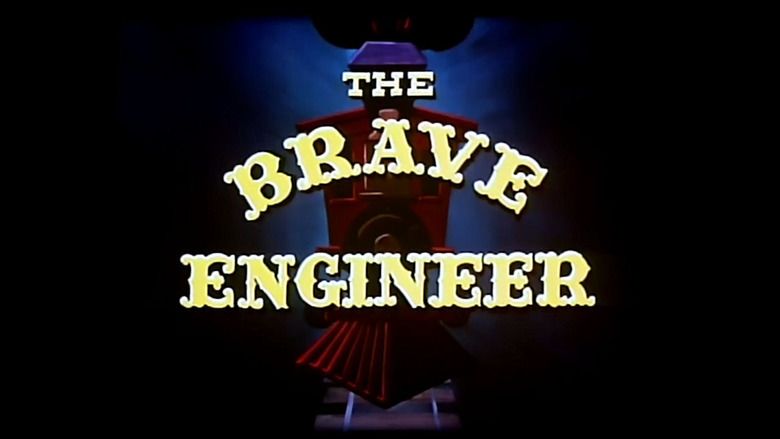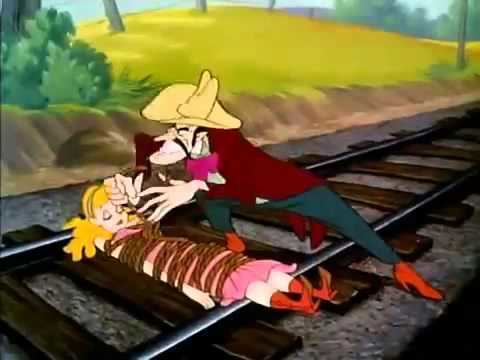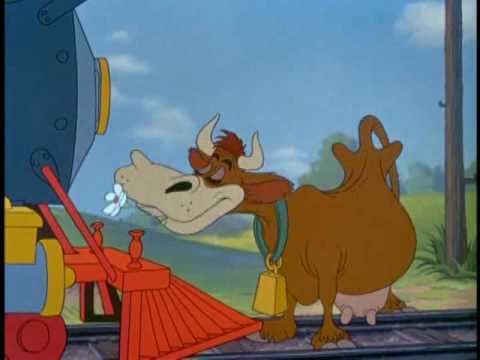The Brave Engineer
6.8 /10 1 Votes
Genre Comedy, Family, Musical Initial release March 3, 1950 Running time 7 minutes | 6.8/10 IMDb Duration | |||||||||||||||||||||||||||||||||
 | ||||||||||||||||||||||||||||||||||
Cast (Narrator), (Himself), Jon Dodson (Himself), Bud Linn (Himself), Rad Robinson (Himself)Genres Animation, Short Film, Comedy, Family film Similar movies Pacific Rim , Paperman , Feast , Get a Horse! , The Artist , Mickey, Donald, Goofy: The Three Musketeers | ||||||||||||||||||||||||||||||||||
Walt disney the brave engineer 1950
The Brave Engineer is a 1950 Walt Disney-produced short subject cartoon, based on the exploits of legendary railroad engineer John Luther "Casey" Jones. It is narrated by comic Jerry Colonna and is a fanciful re-telling of the story related in the Wallace Saunders ballad, later made famous by Eddie Newton and T. Lawrence Seibert.
Contents
- Walt disney the brave engineer 1950
- Jerry colonna in disney s the brave engineer
- Synopsis
- Differences between the cartoon and real life
- Additional information
- References

Jerry colonna in disney s the brave engineer
Synopsis

The film opens with an overhead shot of a sprawling railroad yard in the morning, where all the trains are "fast asleep". The shot begins to focus on a single train with Engine No. 2, an American Standard 4-4-0, which is Casey's, whose engine, of course, is "slow asleep," and eventually cuts to a closeup of the engine's cab window, where Casey is revealed to be sleeping in his engine cab.

Doffing his bedclothes, he checks his watch and, realizing that he is fully behind schedule, hurriedly readies the engine to depart. Mail is loaded aboard the mail car on the train and with a toot on the engine's whistle, Casey sets off at a dangerously high speed through the maze of switches and sidings, nearly T-boning two other trains in the process before making it safely out of the yard.

At first, the trip remains uneventful. Further on, however, the weather becomes nasty, flooding the tracks like "the bed of a creek" and all but swamping the entire train. Eight hours late, but nonetheless undaunted, Casey climbs up onto the engine's cab roof and uses his coal shovel as a paddle. Before long, when the flood has cleared, Casey is on his way again.

No sooner has the train been back up to full speed, though, than Casey is forced to bring it screeching to a halt: standing in the middle of the tracks grazing nearby, is a large brown cow being forced to move aside after much shouting and whistle blowing on Casey's part. As the cow clears, Casey starts shovelling the coal into the engine's furnace while realizing he is late.

Unfortunately, a new problem presents itself. A stereotypical villain with a black handlebar mustache has tied a lady to the tracks in front of Casey's train. Unwilling to waste any more time stopping, Casey rushes forward, stands on the engine's cowcatcher, and scoops up the terrified woman just seconds in the moment in which the train is about to run her over. Casey is in such a hurry now, that he doesn't have time to even stop to let her off, depositing her (rope and all) in the arms of a pleasantly surprised stationmaster as he rushes past the next platform at full speed.
Hours later, nightfall has come and Casey's engine is found steaming full-bore through a narrow, snow-covered mountain pass. As the train passes over a high trestle spanning a gorge however while Casey is stoking the engine's boiler and blowing into the engine's firebox to make the train go faster, another stereotypical villain who "does not appear on the level" nearly brings things to an explosive end. Once again undaunted by a seemingly impassable obstacle, Casey's engine struggles, huffing and puffing, up the side of the gorge and continues on its way again.
A short while later, a group of armed men on horseback watch the train from up on a hillside in a desert and charge down toward the train because they think there's gold on Casey's engine. The next shot finds the whole gang inside the engine's cab, brandishing their guns and knives menacingly. At first, Casey is so caught up in stoking the engine's boiler with coal from the engine's coal tender, that he is oblivious to their presence and doesn't notice the thieves. It is in the next moment that he accidentally picks up one of the bandits standing on his coal shovel-full of coal that he finally notices the uninvited company before he nearly shovels a bandit into his engine's furnace. Even then, Casey is extremely annoyed by this new distraction than anything else and begins to fight the train bandits, hitting them repeatedly with his coal shovel, and continuing to stoke the engine's boiler with coal from the engine's coal tender.
After quickly throwing the last of the would-be thieves away from the train, Casey checks his watch and is horrified to discover that the train thieves have put him fully behind schedule once again. Determined to make up for lost time whatever the cost, he opens the engine's throttle so wide that he actually rips the engine's handle from its mount and throws it away. The night time changes to day as the train speeds at a high speed.
The scenery outside quickly becomes a blur as the train travels faster and faster. Casey adds more coal to the engine's furnace, and, when running out, also uses up his coal shovel and rocking chair, until the ribbing on the engine's boiler exterior is forced off. Casey grabs and fits the engine's funnel back on, before it falls off, when the train speeds down one hill, it heads past a 7 mile sign, and burns it and the tracks. As the engine's cowcatcher nearly snaps off, Casey pulls it back on, before the engine's boiler gets so hot that the parts fall off, and while Casey manages to fix it time, he bravely gives his engine some running repairs while the train is seen roaring down a hill.
While otherwise occupied, Casey doesn't notice that another train, a slow freight train, double-headed by a pair of 4-8-0 tender engines is coming toward him on the very same track in the opposite direction, but Casey, however, is much too busy fixing his engine's dome to take any notice. And as the other train comes toward the train, which goes round the curve, Casey bravely grabs the engine's dome and puts it back on. The engineer, who is piloting the front engine, incredibly shocked from upon seeing Casey's train up ahead, screams 'Egad!' in fear and suddenly blows the engine's whistle to alert the others that Casey's train is heading toward them like a bullet in shock. The brake-man, upon seeing the double-headed slow freight train, gasps, climbs out of the caboose, and runs up over the mail car, toward the engine to warn Casey about the oncoming train, but Casey can't hear the brake-man, who then fails to get the message because he thinks he's worried about being late. As the other train approaches, the brake-man blows the whistle, but Casey scoffs 'So what?' As Casey's friend says 'So long,' he jumps off the train, and in the far away next shot, a view from Casey's train, he is back on the train and is shown still standing there on the engine's roof. The workers of the double header, who are approaching on their train, all gasp in terror, and quickly abandon their train as well by jumping out of their engines' cabs, and run for cover, and just as Casey now begins to notice, he finally gasps 'Egad!' one more time before the two trains begin to collide with a violent chain reaction of large explosions in a cloud of black smoke.
Afterwards, we are taken to a station, presumably the one Casey is meant to terminate at, and, with Casey being late, the Porter fears the worst. Then, much to his joy and surprise, Casey rolls down the hill in the remains of his engine carrying a bag of mail.
A beaten-up Casey then shows his watch with pride, which states he is 'ON TIME—ALMOST'. And the Narrator says 'Next time, take the train!'
Differences between the cartoon and real life
Additional information
Distributed by Buena Vista Distribution Co., Inc.
Color by Technicolor.
Release Date: March 3, 1950
Director: Jack Kinney.
Producer: Walt Disney.
Animators: Milt Kahl, Fred Moore, Al Bertino.
Effects Animation: Andy Engman.
Layout: Don DaGradi.
Backgrounds: Ray Huffine.
Writers: Dick Kinney, Dick Shaw.
Musical Score: Ken Darby.
Based on "The Ballad of Casey Jones" by Eddie Newton, T. Lawrence Seibert.
Vocals: The King's Men.
Running Time: 7 min. 38 sec. (un-edited)
References
The Brave Engineer WikipediaThe Brave Engineer IMDb The Brave Engineer themoviedb.org
